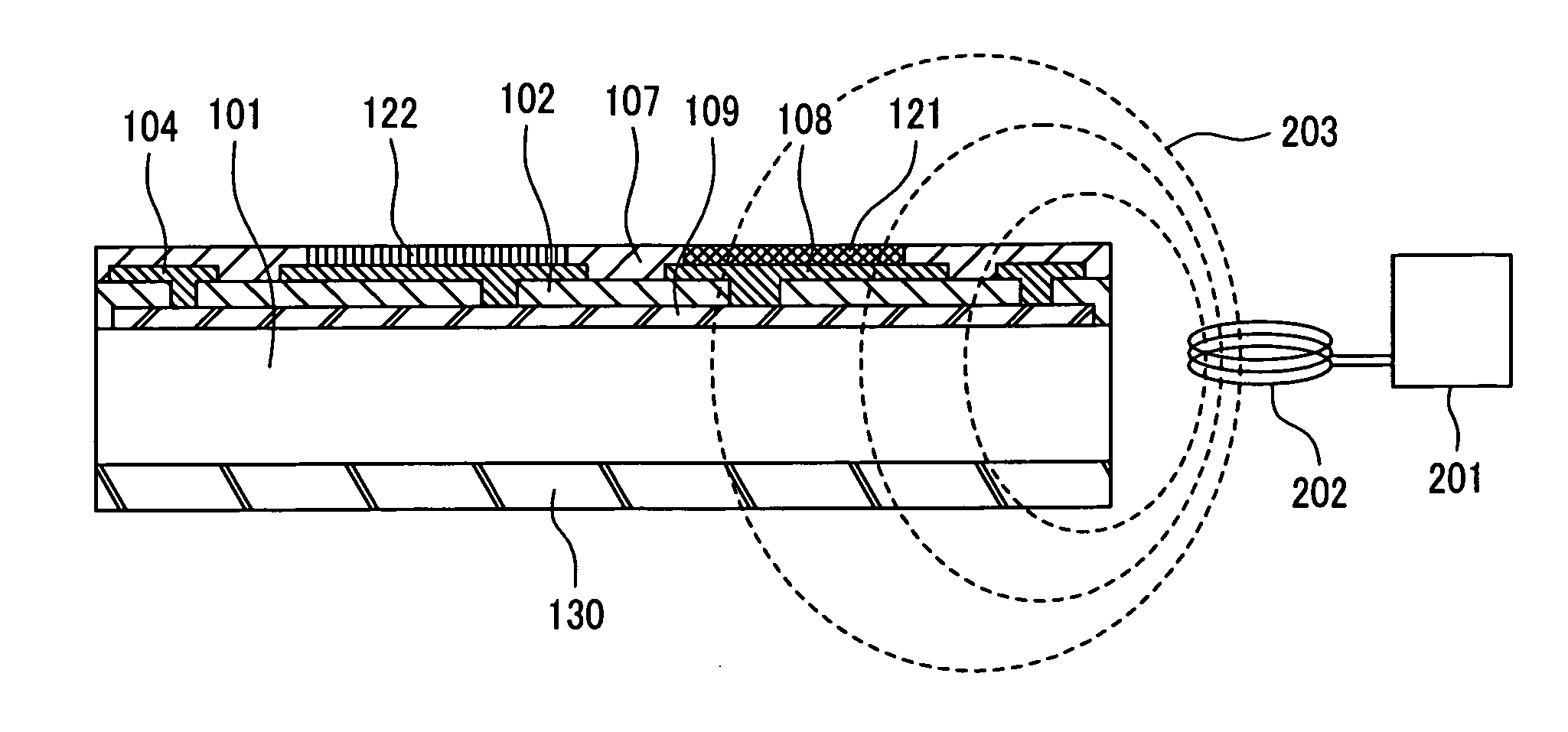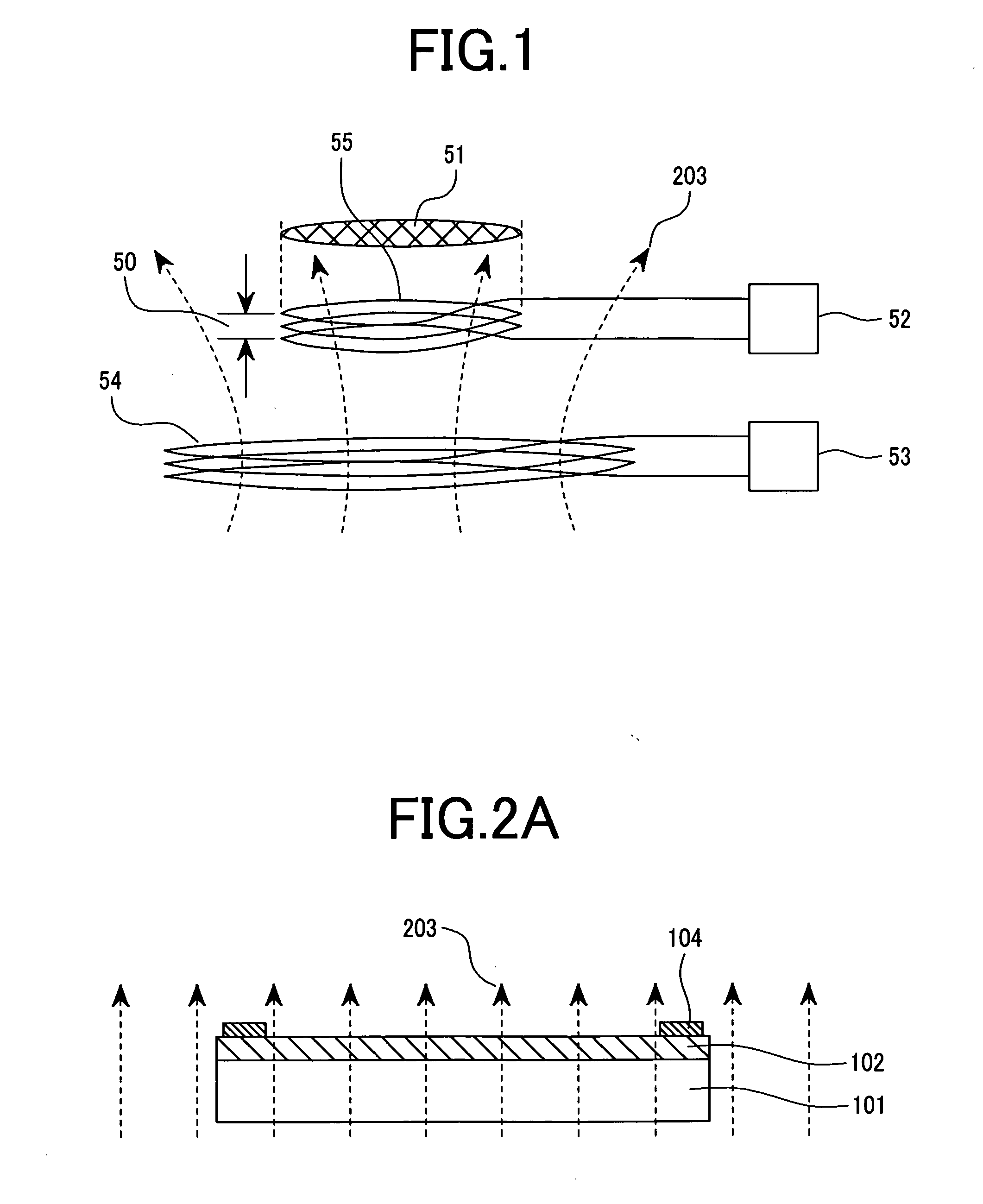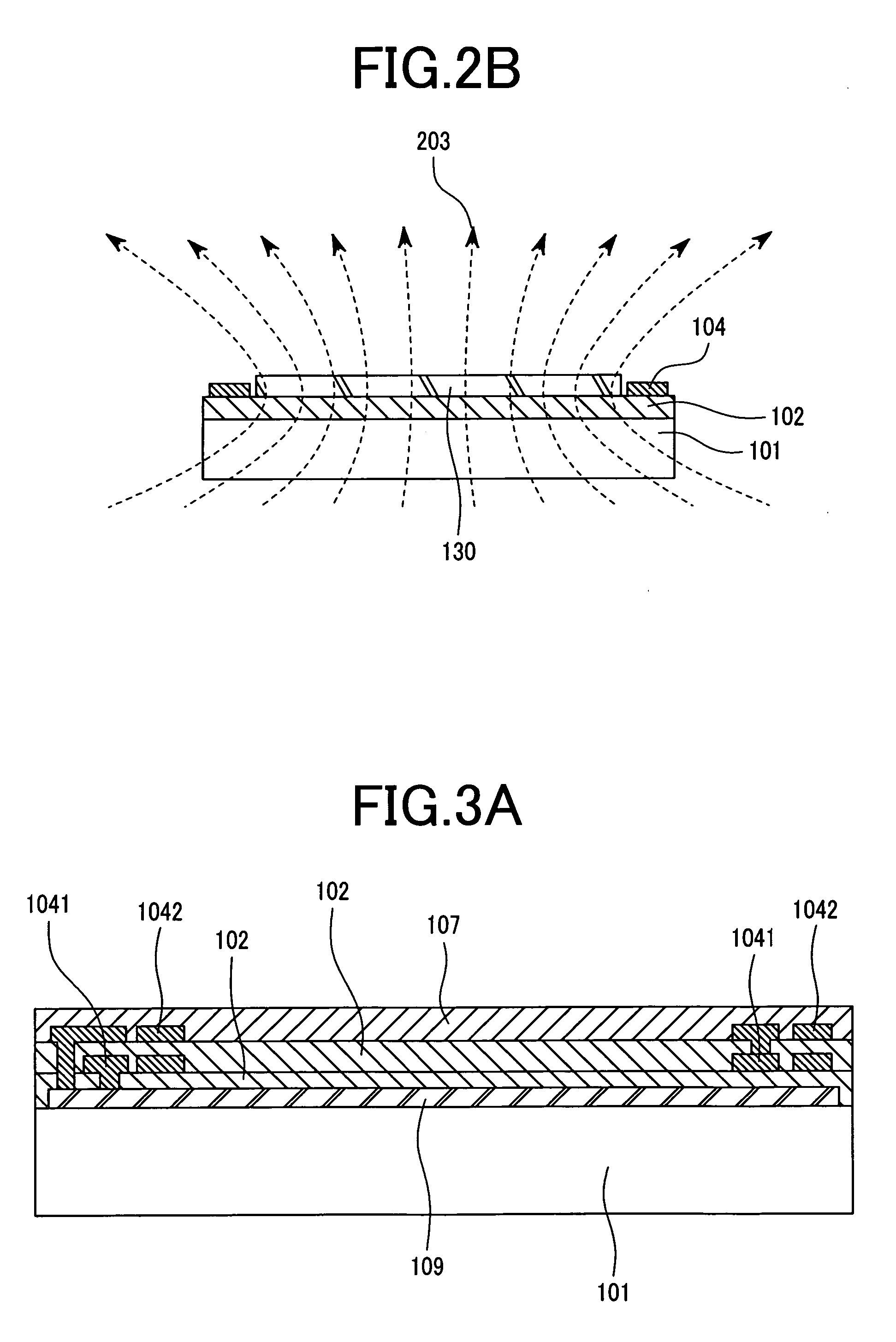Semiconductor chip with coil antenna and communication system
a technology of electromagnetic field and coil antenna, which is applied in the field of electromagnetic field, can solve the problems of difficult to obtain a larger electromotive force vtag than that required for driving a semiconductor chip, the data capacity is much larger than that of the magnetic card or bar code, and the reader cannot receive data accurately, etc., to achieve the effect of increasing the magnetic flux tag, high parasitic capacitance, and high inductan
- Summary
- Abstract
- Description
- Claims
- Application Information
AI Technical Summary
Benefits of technology
Problems solved by technology
Method used
Image
Examples
first embodiment
[0074] The construction of a semiconductor chip having a sensor function according to a first embodiment is shown schematically in FIG. 5. A reader / writer 201 is disposed with respect to the semiconductor chip indicated at 100. The reader / writer 201 has the function of transmitting an alternate magnetic field to the semiconductor chip 100 having a sensor function and receiving a reply from the same chip. The reader / writer 201 is controlled by a controller 200 such as a PC (Personal Computer). A spiral transformer 206 or the like is used in the transmitter of the reader / writer 201.
[0075] On the other hand, the semiconductor chip 100 having a sensor function is in the form of an individual chip obtained by dicing and an internal configuration thereof, when classified according to functions, can be divided into an antenna section 207, an RF section 208, a control section 209, and a sensor section 210. The antenna section 207 is adapted to receive an alternate magnetic field 203 necess...
second embodiment
[0094] In a second embodiment, a semiconductor chip 99 uses its ID information as an object of radio communication. That is, the semiconductor chip 99 does not have a sensor function. For the purpose of enhancing the electromagnetic coupling of the chip, the semiconductor chip 99 is configured such that a magnetic material is disposed in a hole formed by half etching in a silicon substrate on the back side of an integrated circuit.
[0095] The configuration of the semiconductor chip 99 of this embodiment is shown schematically in FIG. 12. A reader / writer 201 is controlled by a controller 200 such as PC and has a function of transmitting an electromagnetic field to the semiconductor chip 99 and receiving a reply from the same chip. This transmitter section is composed of a transformer 206 of a spiral figure. On the other hand, an internal configuration of the semiconductor chip 99 can be divided according to functions into an antenna section 207, an RF section 208, and a control secti...
third embodiment
[0104] In a third embodiment, a magnetic material is disposed in accordance with another structure in the semiconductor chip 100 of the first embodiment. In all of the following examples it is preferable that a dicing process into individual chips be carried out after the formation of a magnetic material.
[0105]FIG. 15 is a cross-sectional view showing an example in which a magnetic material 130 is bonded inside the coil antenna 104. After the coil antenna 104 is formed in the same way as in the first embodiment, the magnetic material 130 is formed by bonding so as not to overlap the ion sensitive FET 122 and the reference electrode 130. The number of processes required for affixing the sensitive material 130 is small and hence it is possible to effect a less expensive manufacture.
[0106]FIG. 16 is a cross-sectional view showing an example in which a resin with a magnetic material 131 dispersed therein as the protective polyimide 107 is stacked and bonded.
[0107] In the semiconducto...
PUM
| Property | Measurement | Unit |
|---|---|---|
| resonance frequencies | aaaaa | aaaaa |
| resonance frequencies | aaaaa | aaaaa |
| resonance frequency | aaaaa | aaaaa |
Abstract
Description
Claims
Application Information
 Login to View More
Login to View More - R&D
- Intellectual Property
- Life Sciences
- Materials
- Tech Scout
- Unparalleled Data Quality
- Higher Quality Content
- 60% Fewer Hallucinations
Browse by: Latest US Patents, China's latest patents, Technical Efficacy Thesaurus, Application Domain, Technology Topic, Popular Technical Reports.
© 2025 PatSnap. All rights reserved.Legal|Privacy policy|Modern Slavery Act Transparency Statement|Sitemap|About US| Contact US: help@patsnap.com



